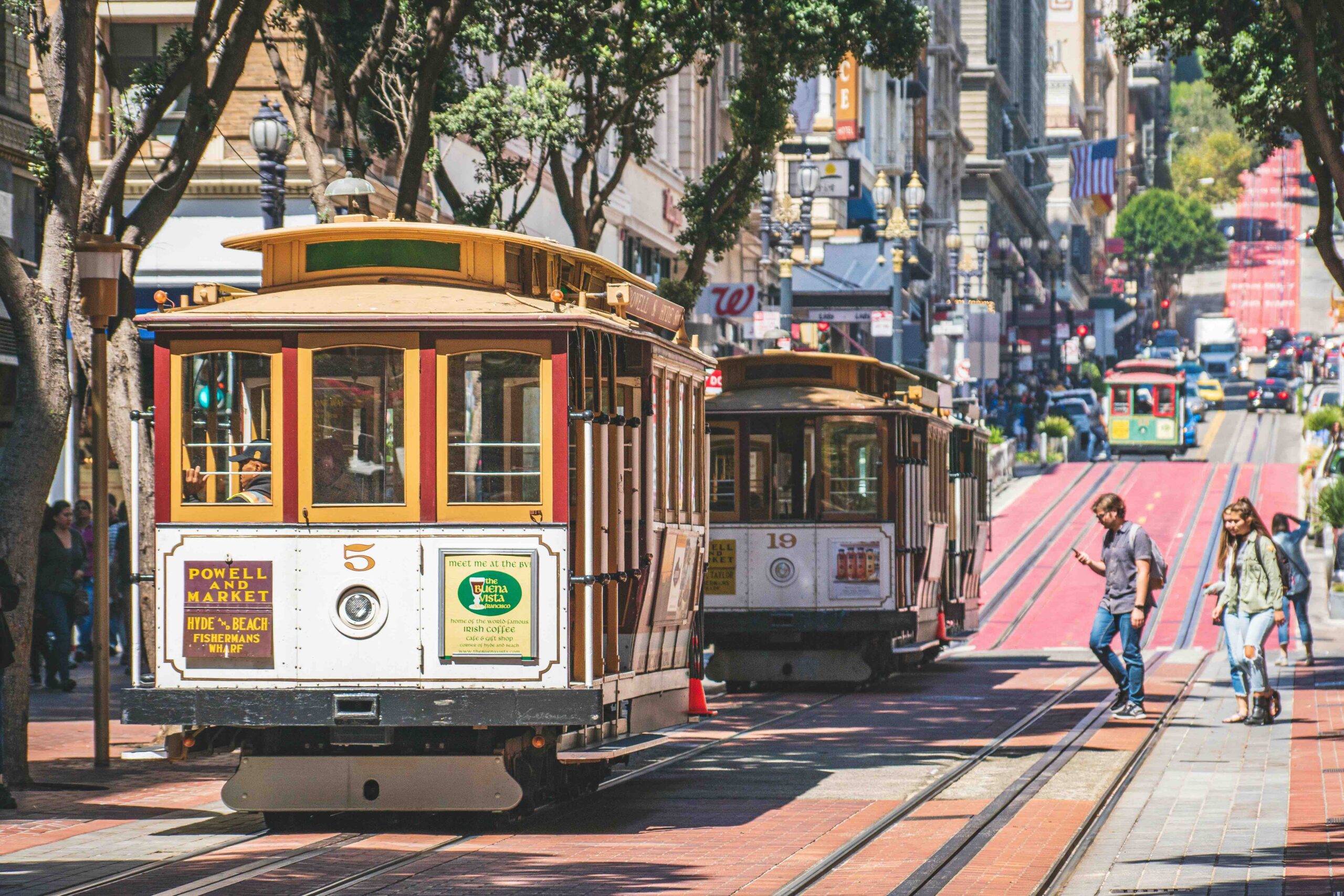High percentages of individual car ownership has caused some challenges in American cities, including serious climate impacts. The emissions produced by gridlock traffic have contributed to air pollution on top of overcrowding.
Most of these emissions come from light-duty vehicles, as many people use their cars to drive a few miles down the road. Public transportation is the widely accepted method for curbing emissions; however, it may take more than bus services or railways. Some experts say to reduce a city’s carbon footprint, multimodal transportation — multiple modes of transit — is necessary.
How We Got Here
In 2020, the Center for Climate and Energy Solutions determined that 27.2% of greenhouse gas emissions came from the transportation sector, the largest source of emissions in the nation. The U.S. still relies on automobiles for transportation, and historical factors have contributed to this phenomenon.
The rise of interstate highways and the promotion of individual car ownership dating back to postwar America caused many towns and small cities to scatter across larger areas
leaving some communities cut off from education and employment opportunities as a result.
In addition, there are pedestrian risks for those who walk or bike to places due to a lack of safety measures. Health-related problems, like city driving, also contribute to rising stress levels. Similarly, the National Highway Traffic Safety Administration released numbers citing the increase in vehicular deaths in 2020 — “the largest projected number of fatalities since 2007.”

Photo Courtesy Nextbike
Slow And Steady
Municipal enforcement is crucial for multimodal transportation to be an effective way to slash emissions in cities and reduce safety hazards for civilians. In cities like San Francisco, Baltimore, and Washington, D.C., the “slow streets” concept has been tapped to slow down drivers and protect pedestrians.
Slow streets are designed with designated bike lanes protected from traffic. You can only enter on foot or bike. Cars are not allowed on these streets at certain points of the week.
In Baltimore, slow streets provide traffic-calming sensations, allowing pedestrians to walk freely and enjoy their neighborhood.
A 2021 customer survey from the San Francisco Municipal Transportation Agency found that 71% of residents highly support slow streets. They cite improved traffic conditions, better walking safety, and greater bike access as the reason to keep this initiative going, perhaps with even greater emphasis.
The concept hasn’t worked everywhere, though. D.C. ended its slow street program after some residents cited a “lack of enforcement” and needed clearer signage by the city. According to Trayon White, Ward 8 councilmember, some Ward 8 citizens haven’t supported measures like bike lanes and slowed pedestrian areas for appearing to show aspects of gentrification, which concern citizens about displacement.
Some say access to transportation isn’t equal, either. Many residents of Ward 8 in Northeast D.C. pointed this out to local news outlets. The District is working to find an effective slow street solution.
Liz Farmer, an associate at the Lincoln Institute of Land Policy, wrote that slow streets need more enforcement, equal transportation access, and community buy-in to be successful.
“While the concept of slow streets was generally well received, its implementation in Washington and other cities was sometimes rocky — and sparked much-needed discussions about equity, access, and planning,” she said in her column.
“It is a priority for us to build infrastructure that connects people, that connects neighborhoods,” Jeff Marootian, former Washington, D.C. Department of Transportation director, said to Washington City Paper in 2020. “In many cases, we’re looking to right the historical wrongs of past transportation decisions, and we take that incredibly seriously.”

Photo Courtesy Aaron Doucett
Price Is Right
New York City has developed a slow street plan that spurs multimodal transportation and economic growth. For starters, the island of Manhattan plans to implement “cordon” or “congestion” pricing, meaning drivers would be required to pay fees to enter the heart of the Big Apple. The city government hopes to encourage more biking and public transportation by enacting further tolls. The revenue collected from the congestion pricing can fund more mass transportation developments.
Congestion pricing is not universally popular. New York and New Jersey are arguing over it as they deal with the consequences of making it more expensive to use city tunnels and bridges.
“London, Stockholm, Singapore, and other cities around the world have done it [congestion pricing]. David Kim, senior vice president and principal of National Transportation Policy and Multimodal Strategy at WSP USA,” told GreenBiz. “We should consider deploying pricing strategies where it makes sense to do so.”
In 2013, New York City Hall published a research piece on the economic and environmental benefits of “sustainable streets.” Findings suggest making sidewalks more walkable helps businesses to flourish thanks to increased foot traffic. About a decade later, City Hall is implementing some of these strategies.
NYC’s slow street expansion slowed as the pandemic subsided. Now called the Open Streets initiative, the 5 Boroughs all have varying degrees of success with plaza-style streets.
Some residents in Brooklyn and Queens believe open streets make finding parking more difficult.
Others in Manhattan enjoy these areas, as they are safer for pedestrians and offer economic opportunities. A law passed in 2021 requires at least 20 open streets in underserved areas of the city.
Slow streets have gotten mixed reactions nationwide; however, they do provide some benefits to neighborhoods with high-volume traffic. With services like Lyft, Uber/Lime, Citibike, and other bike-sharing options in metropolitan areas, individual vehicle ownership isn’t as necessary in cities. Sufficient public transportation options and biking are ideal for making cities more multimodal.





